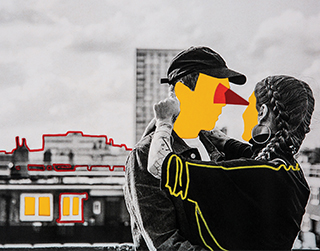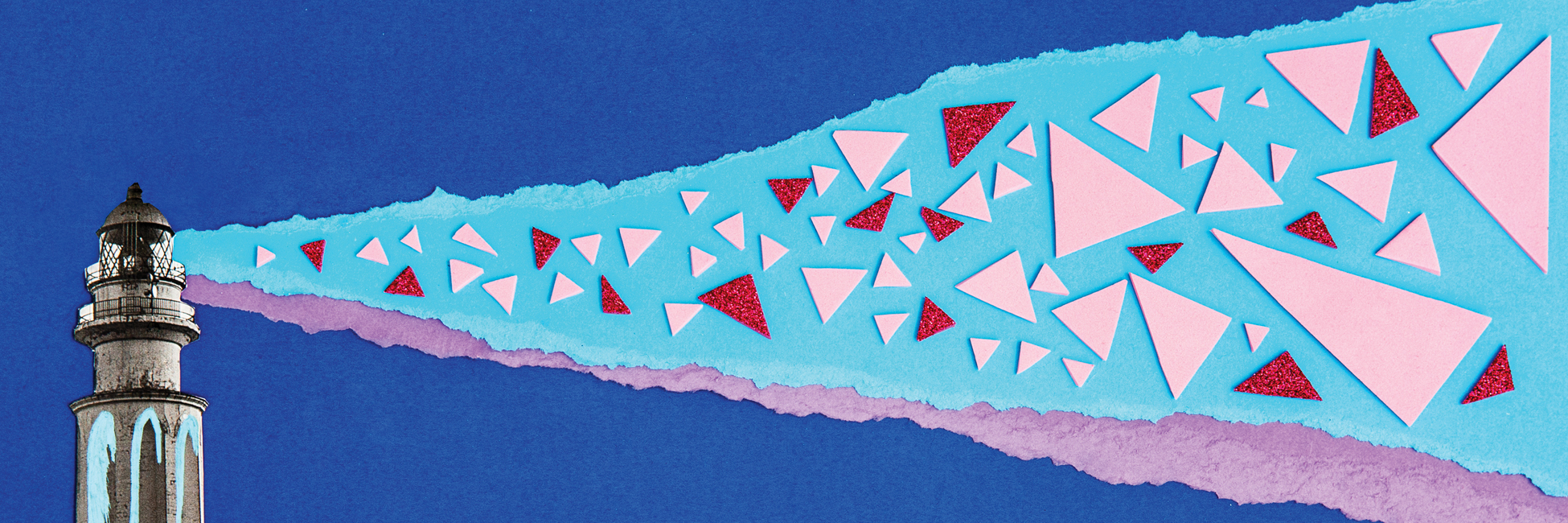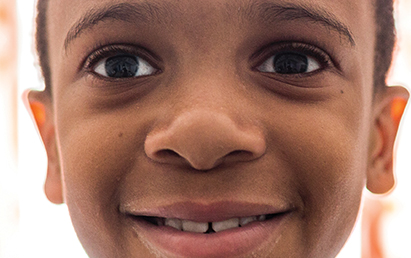We have been looking forward to the New Year with renewed hope and expectations that our society can move past the pandemic and work together toward healing. The past year presented enormous challenges that generations have not seen before. Together, we faced a pandemic, stood up to systemic racial injustices, and went through a contentious political election. The New Year brings hope and optimism that we can unite to tackle major issues that our society faces. As therapists, it is our job to offer hope to individuals who are struggling.
Systemic therapists bring a unique perspective to offer hope and healing in the New Year because we understand the impact of trauma and change on family systems. We are trained to identify and process how macro issues shift roles, values, expectations, boundaries, alliances, and homeostasis within family systems.
Marriage and family therapists (MFTs) understand the role and impact of historical trauma on individuals and family systems (Kirmayer, Gone, & Moses, 2014) and can provide insight about how the pandemic and social justice issues of the past year impacted individuals on a systemic level. And, MFTs recognize that hope-focused interventions are paramount to promoting health and healing within our families and society.
 Hope and the therapeutic relationship
Hope and the therapeutic relationship
Hope is a feeling, want, and desire that things can be different in the future, and it entails the optimism of handling problems in a different way. Ripley and Worthington (2014) coined the adage of HOPE “Handling Our Problems Effectively.” Hope plays a critical role in the early stages of therapy, and when utilized, can encourage clients to believe that a better future is possible. Hope serves as the foundation for couples and family therapy (Ripley & Worthington, 2014), and it should be omnipresent in therapy. According to Cutclifee (2004), hope and the therapeutic relationship should be inextricable from each other. Hope should be intertwined with therapeutic relationship, as it aligns with Carl Rogers’s principles of empathy, caring, and genuineness, which are known variables with therapeutic personality change (Tyler, 1999).
Hope and evidence-based therapy models
Hope is a ubiquitous concept offered throughout the majority of evidence-based therapies (Larsen & Stege, 2010). Emotion-focused therapy offers hope in breaking unhealthy cycles between partners, and through the expression of core emotions. Solution-focused therapy offers hope that change is possible when we focus more on the solutions rather than the problems. Narrative therapy offers hope in unique outcomes and co-authoring a new story. Cognitive behavioral therapy offers hope with cognitive reframing and restructuring of maladaptive thinking and schemas. Dialectical behavior therapy offers hope with the wise mind and embracing a balance in life. In fact, psychotherapy would be inadequate and meaningless without hope.
Hope as a contagion
There is an urgent need for MFTs to hold onto hope even when our clients feel hopeless. Clients sometimes need to lean on the hope and strength of the therapist, and borrow some hope to get them through very difficult times. The presence of hope can be contagious between the therapist and client. There is tremendous power in the concept of holding onto hope and believing in the possibility for a better future.
Snyder, McDermott, Cook and Rapoff (2002) discussed the development of a hope-infectious environment. The goal is to promote a contagion of hope throughout the therapeutic process. A therapist’s positive expectations can influence a client’s success and trajectory in therapy (Miller, 1985). A therapist who tells a client, “I recognized a lot of strengths in you today, and I believe that you are capable of making the changes that you want to make” can foster a sense of hope. Offering clients hope can help to shift their perspectives about the problem, and work toward more solutions and possibilities.
Hope as a protective factor
Hope is a protective factor and is a foundational element for human strength and resiliency. Clients often enter therapy feeling very hopeless, and the pandemic and societal problems of the past year have magnified this sense of hopelessness. Hopelessness can lead to clients feeling despair, overwhelmed, unable to change, and powerless. Hopelessness is a key risk factor with suicide, and antithetically the restoration of hope is a key protective factor with suicide prevention (Klonsky & May, 2015; Van Orden et al., 2010). MFTs can be proponents of change by offering a safe space, and being an anchor, for clients to experience a corrective emotional experience that is grounded in hope.
Hope and change
Hope is recognized as an important factor of the human change process (Larsen & Stege, 2020), and it is a key contributing factor to change across a variety of theoretical approaches (Hubble, Duncan, & Miller, 1999). The past year has prompted the need for MFTs to hold onto hope more now than ever before. We are in a key position to offer the possibility of hope and healing to individuals and families. Our society is recovering from tremendous losses physically, emotionally, spiritually and financially; but we are resilient. MFTs have long believed that even family systems that have been through the worst types of trauma and pain are still capable of healing. The master therapists such as Carl Whitaker, Virginia Satir, and Sue Johnson all believed in the potential of individuals and family members to turn toward each other with hope and healing. We have the unique opportunity to continue their legacy by offering a foundation of hope and healing as we move into the New Year.
Our society is recovering from tremendous losses physically, emotionally, spiritually and financially; but we are resilient. MFTs have long believed that even family systems that have been through the worst types of trauma and pain are still capable of healing.

Jennifer Weniger, PhD, is a licensed psychologist, licensed marriage and family therapist, and an AAMFT Clinical Fellow and Approved Supervisor. She received her doctoral degree in psychology from California Southern University and a doctoral degree in general psychology with an emphasis in advanced MFT studies from Northcentral University. Weniger has 20 years of experience working in the mental health field, has been an administrator at a residential treatment center for abused children, and was the CEO of Cornerstone Behavioral Health Group. Currently, she works as the director of Clinical Training at Loma Linda University Behavioral Medicine Center. Her areas of research include pediatric suicide assessment and prevention.
REFERENCES
Cutcliffe, J. (2004). The inspiration of hope in bereavement counseling. London: Kingsley.
Hubble, M. A., Duncan, B. L., & Miller, S. D. (1999). The heart and soul of change: What works in therapy. Washington, DC: APA.
Kirmayer, L, Gone, J., Moses, J. (2014). Rethinking historical trauma. Transcultural Psychiatry, 51(3), 299-319.
Klonsky, D., & May, A. (2015). The three step theory: A new theory of suicide rooted in the ideation to action framework. International Journal of Cognitive Therapy, 8(2), 114-129.
Larsen, D., & Stege, R. (2010). Hope focused practices during early psychotherapy sessions: Part I Implicit Approaches. Journal of Psychotherapy Integration, 20(3), 271-292.
Miller, W. R. (1985). Motivation for treatment: A review with special emphasis on alcoholism. Psychological Bulletin, 98, 84-107.
Ripley, J., & Worthington, E. (2014). Couple therapy: A new hope focused approach. Westmont, IL: Intervarsity Press.
Snyder, C. R., McDermott, D., Cook, W., & Rapoff, M. A. (2002). Hope for the journey: Helping children through good times and bad. New York: Percheron Press.
Tyler, K. (1999). Examining unconditional positive regard as the primary condition of therapeutic personality change. The Person Centered Journal, 6(2), 100-107.
VanOrden, K., Witte, R., Cukrowicz, K., Braithwaite, S., Selby, E., & Joiner, T. (2010). The interpersonal theory of suicide. Psychological Review, 117(2), 575-600.
Other articles
Suffering in Silence: Postpartum Anxiety in the Wake of COVID-19
While postpartum mood disorders have challenged mothers and their families throughout history, the onset of the COVID-19 pandemic has only amplified the experience of mothers who wrestle with anxiety and depression.
Evdoxia Mpras, MFA and Ashley Landers, PhD
Impacts of the Pandemic and Systemic Racism on Foster Youth
Foster youth live in the eye of the storm and are at risk for the most significant consequences to both their short- and long-term well-being, as the child welfare system reflects, maintains, and perpetuates racism in the U.S.
Deanna Linville, PhD, Saralyn Ruff, PhD and Felicia Gutierrez, BS
Harvesting Hope for 2021
Hope is a natural complement to the practice of MFT—a discipline that prioritizes systemic strength and health, as opposed to more individual therapy modalities that are focused on psychopathology and dysfunction. Many MFT classic models have traditionally had a hopeful focus, attempting to highlight positive aspects of relationships.
Eli Karam, PhD



